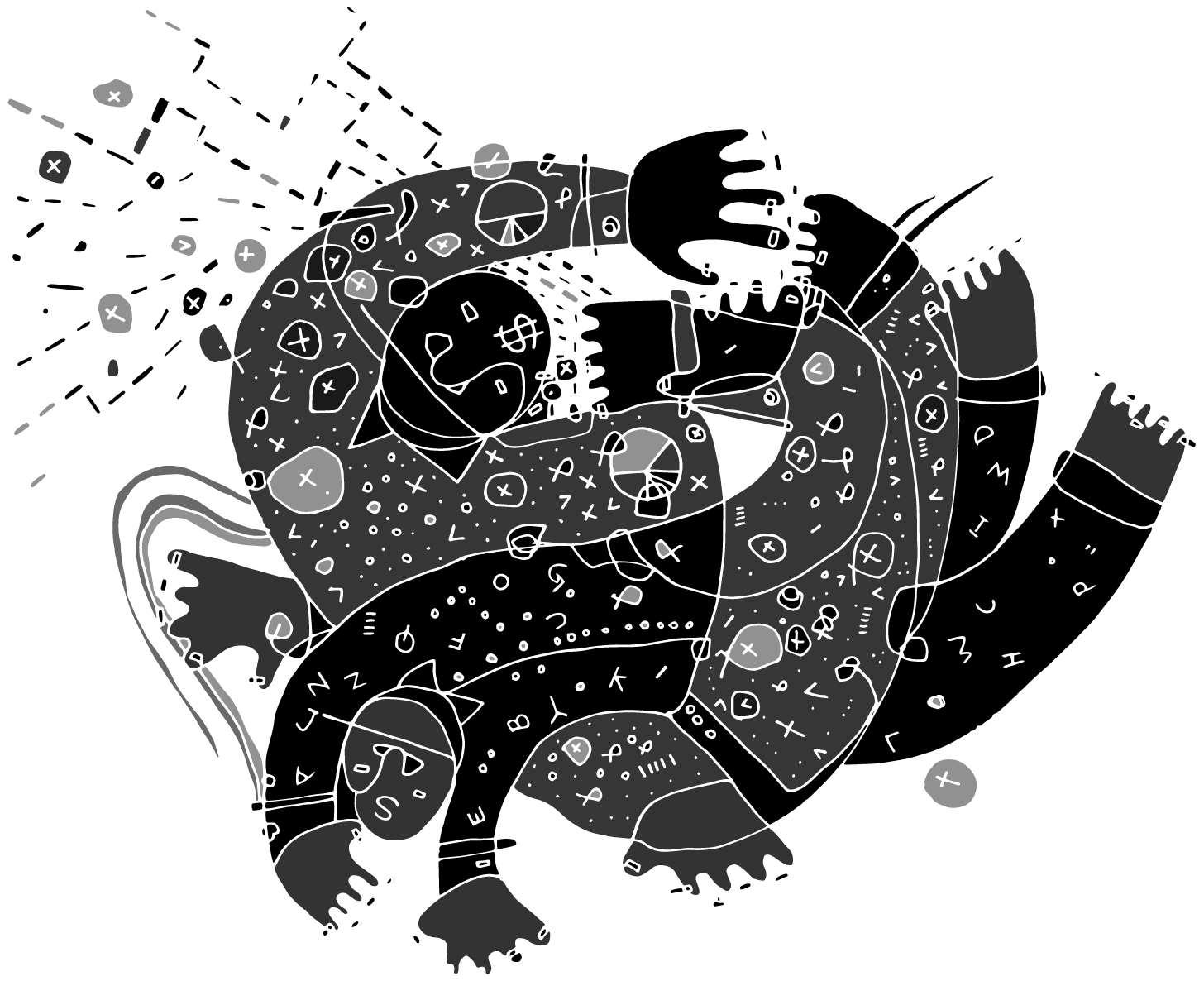
“So, what does an art director do anyway?” I get asked this more than you might imagine. And it’s always asked that way with the emphasis on do. As if one of the possible answers is “oh nothing—nothing at all.” It’s a fair question. It’s a confusing title. Having a job title that’s confusing to the public is fairly benign and common to many occupations. But “art director” is also confusing to the leadership of publishing organizations and confusion in a corporate-cultural context is far from harmless.
Design is not art. There is room for debate in that assertion. I’ve spent a lot of time debating it with myself. Artists use type, designers exhibit art, formal distinctions often fall flat. It’s true that the line between art and design can blur, but the line is also sharp in significant ways. In 1961 Robert Rauschenberg demonstrated that “because I say so” is all that’s required to define the nature of your own creative act. If I assert that the design work I perform for clients is in fact performance art then I’m right—because I say so. The more important question is to what degree does being right about that matter—how much influence does it hold? Influence meaning: do any of the performance artists, curators, critics, historians, gallery and museum directors who are referenced by association with my assertion agree with me? Further, has my assertion achieved the critical mass of consensus that would qualify it as a contribution to the culture that it references? And therein lies the truly significant distinction. Everything can be anything, but within society art and design have largely separate institutions, histories, heroes, functions, and valuations. What does a publishing art director do? A publishing art director is a designer who directs other designers. Here “design” includes photography and illustration as sub-components and neither of these disciplines qualify as art in this context either, by the same logic described above. “Art director” is truly a culturally inaccurate descriptor. While we’re at it “creative director” is worse than inaccurate—it’s vague. But to what degree does this inaccuracy matter? Again, how much influence does it hold? After all, “what’s in a name?” In my experience every name is a social signal that prompts prejudgment, which carries consequences. Language shapes our reality and the inaccuracy of “art director” narrows the potential role of design in publishing organizations.
MBA programs presently teach design methods as a viable approach to framing ill-defined business problems, and fostering innovation in conventional organizations. Business leaders currently see value in designerly ways of knowing. In this context it’s illogical for design leaders to distance themselves from the word “design” via inaccurate titles. Doubly so if they distance themselves by replacing “design” with a word that is culturally far afield from their actual value proposition. It neither benefits design nor the publishing industry. Design director is a common title in some industries but I’ve never met a book publishing design director. Conversely the title art director is employed beyond publishing but to my mind it’s publishing where the title does the most harm.
It’s critical to future of design for every designer—no matter their level or industry—to self identify as a business partner. To go beyond the role of a technician by playing the part of a stakeholder. To speak up when things don’t add up and stand up for the needs of the customer. A name’s signal also carries inward consequences—it frames the way we see ourselves. Full disclosure, my current title is art director. But the next time I transition between positions replacing the word “art” with “design” in my title will be one of the things I negotiate for. If you are also a publishing design professional I encourage you to do the same.
Update: three months after this essay was published my title was officially changed to design director.
